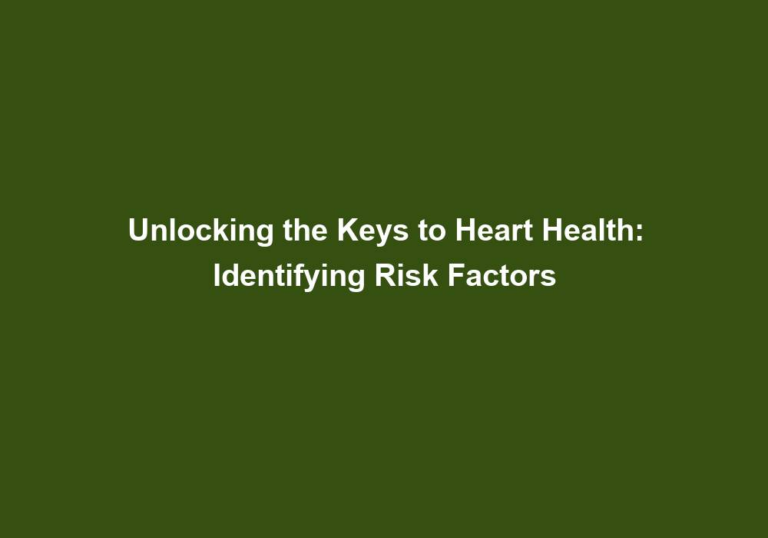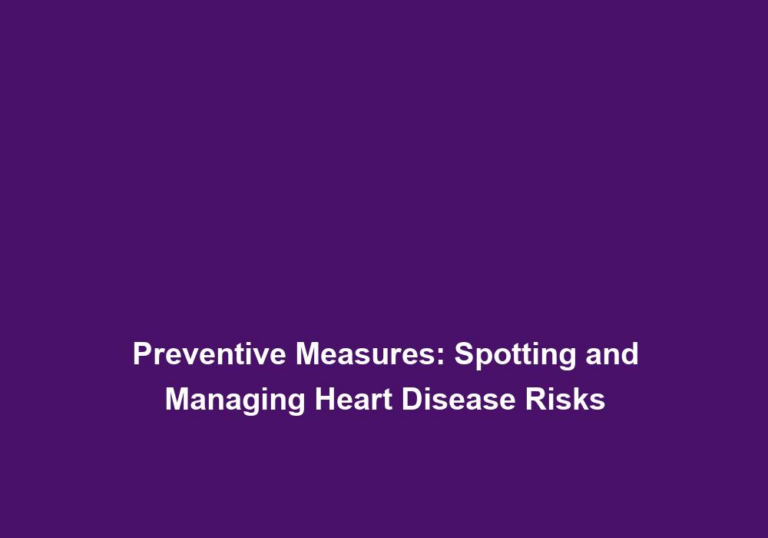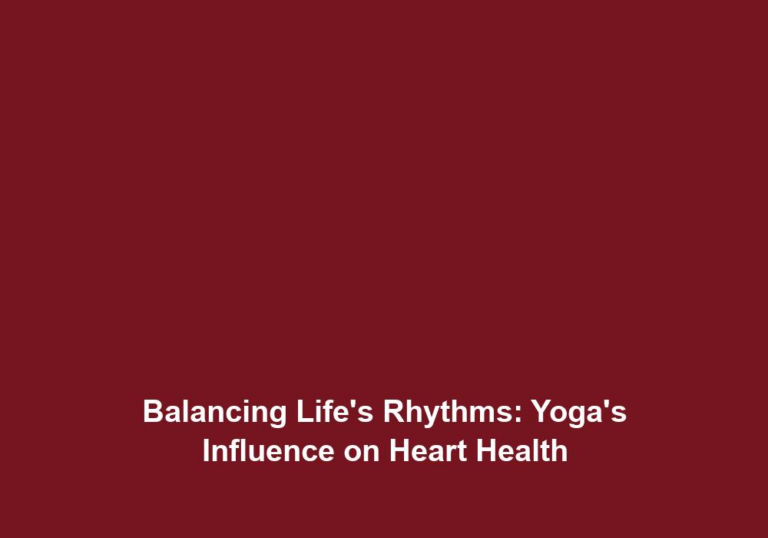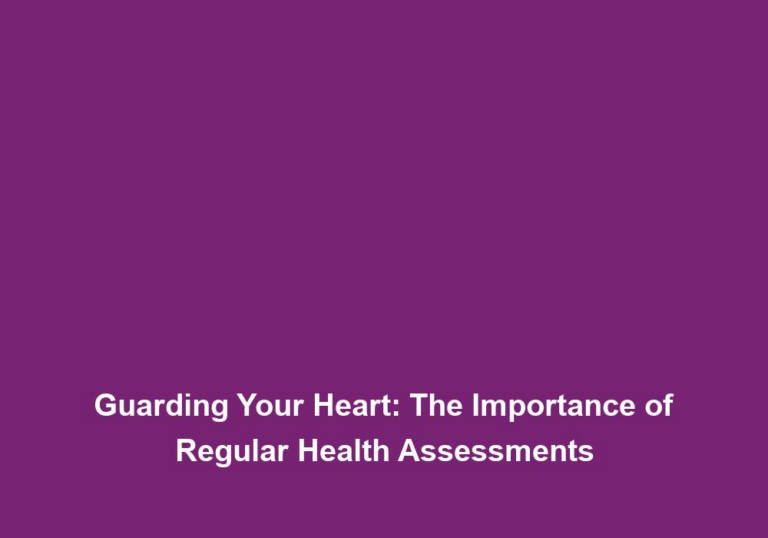Tracking Vital Signs: The Role of Blood Pressure Checks in Heart Care
Regular monitoring of vital signs is a crucial aspect of maintaining good heart health. Among all the vital signs, blood pressure plays a pivotal role in assessing cardiovascular well-being. In this article, we will explore the significance of blood pressure checks and their indispensable role in heart care.
Importance of Blood Pressure Checks
Blood pressure checks are not to be taken lightly as they serve multiple important purposes in maintaining heart health. Let’s delve deeper into the significance of blood pressure checks:
-
Detecting Hypertension: Hypertension, commonly known as high blood pressure, is a prevalent condition that significantly increases the risk of heart disease, stroke, and other cardiovascular complications. Regular monitoring allows for early detection of hypertension, enabling timely intervention and better management of the condition. By identifying hypertension early on, healthcare professionals can implement appropriate lifestyle modifications and prescribe medications to control blood pressure levels effectively.
-
Preventing Heart Disease: Monitoring blood pressure is crucial in assessing the risk of developing heart disease. High blood pressure puts strain on the heart, increasing the chances of developing various heart conditions, such as coronary artery disease, heart failure, and arrhythmias. Timely identification of elevated blood pressure levels can help prevent the onset of these conditions. By managing blood pressure effectively, individuals can reduce the risk of heart disease and ensure a healthier heart.
-
Evaluating Treatment Effectiveness: For individuals already diagnosed with hypertension or heart disease, regular blood pressure checks are essential to gauge the effectiveness of prescribed treatments. Medications, lifestyle modifications, and other interventions can be adjusted based on blood pressure readings, ensuring optimal control and management of the condition. Regular monitoring also allows healthcare professionals to identify any potential side effects of medications and make necessary adjustments to the treatment plan.
-
Identifying Secondary Causes: Blood pressure checks can also help identify secondary causes of hypertension. Some individuals may have underlying medical conditions, such as kidney problems or hormonal disorders, contributing to elevated blood pressure levels. Detecting these underlying causes is crucial for appropriate treatment and management. By addressing the root cause of hypertension, healthcare professionals can tailor treatment plans to effectively manage blood pressure levels.
Guidelines for Blood Pressure Checks
To obtain accurate blood pressure readings, it is important to follow proper guidelines and techniques. Here are some key considerations:
Positioning:
- The individual should be seated comfortably, with their back supported and feet flat on the floor. This position promotes relaxation and helps ensure accurate readings.
- The arm being used for measurement should be at heart level, preferably resting on a table or armrest. Proper arm positioning helps in obtaining reliable blood pressure measurements.
Preparations:
- Avoid consuming caffeine or tobacco products for at least 30 minutes before the measurement, as they can temporarily elevate blood pressure. By abstaining from these substances, accurate readings can be obtained.
- Empty the bladder beforehand, as a full bladder may affect accuracy. A full bladder can exert pressure on nearby blood vessels, potentially influencing blood pressure readings.
Technique:
-
Using a Reliable Blood Pressure Monitor: It is essential to use a validated and calibrated blood pressure monitor to ensure accurate measurements. Both manual and automatic monitors can be used, with automatic monitors being more convenient for self-monitoring at home. Choosing a reliable blood pressure monitor is crucial to obtain consistent and trustworthy readings.
-
Proper Cuff Placement: Positioning the cuff snugly around the upper arm is vital for accurate blood pressure measurements. The cuff should be aligned with the heart, and the arrow or marking on the cuff should be directly above the brachial artery. Proper cuff placement ensures that the blood pressure readings reflect the true values.
-
Avoid Talking or Moving: To obtain accurate blood pressure readings, it is important to prioritize a quiet and relaxed environment during the measurement. Talking or moving can influence blood pressure readings, leading to inaccurate results. Encouraging the individual to remain still and silent during the measurement helps ensure reliable readings.
-
Multiple Readings: Taking at least two separate readings, with a gap of one to two minutes between them, is recommended. This allows for any variations or fluctuations in blood pressure to be captured. The average of these readings should be considered as the individual’s blood pressure. Multiple readings provide a more comprehensive picture of an individual’s blood pressure status.
Blood Pressure Categories and Interpretation
Understanding blood pressure readings and their categories is essential for accurate interpretation. Here are the different blood pressure categories and their interpretations:
-
Normal Blood Pressure: A normal blood pressure reading is typically below 120/80 mmHg. It indicates a low risk of developing heart disease or complications. Individuals with normal blood pressure levels should still maintain a healthy lifestyle to prevent any future problems.
-
Elevated Blood Pressure: Readings ranging from 120-129/<80 mmHg are categorized as elevated blood pressure. Although not considered hypertension, this range indicates an increased risk of developing high blood pressure in the future. Individuals with elevated blood pressure should focus on lifestyle modifications, such as maintaining a healthy weight, exercising regularly, and reducing sodium intake.
-
Hypertension Stage 1: This stage is defined by readings of 130-139/80-89 mmHg. It signifies the presence of hypertension and requires lifestyle modifications and close monitoring. Healthcare professionals may recommend dietary changes, regular exercise, stress management techniques, and possibly medication to control blood pressure effectively.
-
Hypertension Stage 2: Readings of 140/90 mmHg or higher fall into this category. Immediate intervention and treatment, including medication, are typically required to manage hypertension effectively. Individuals with stage 2 hypertension should work closely with healthcare professionals to develop a comprehensive treatment plan that includes medication, lifestyle modifications, and regular monitoring.
Implementing Regular Blood Pressure Checks
Incorporating regular blood pressure checks into one’s routine is crucial for comprehensive heart care. Here are some tips for effective implementation:
-
Schedule Regular Check-ups: Regularly visit a healthcare professional to have blood pressure checked. The frequency of check-ups may vary depending on an individual’s health status, age, and risk factors. By scheduling regular check-ups, individuals can stay informed about their blood pressure levels and make necessary adjustments to their lifestyle or treatment plans.
-
At-home Monitoring: For individuals with hypertension or increased cardiovascular risk, self-monitoring of blood pressure at home can be beneficial. Using a reliable blood pressure monitor, measurements can be taken at specific times of the day or as advised by a healthcare provider. At-home monitoring provides individuals with a sense of control over their health and allows for more frequent blood pressure checks.
-
Maintain a Blood Pressure Log: Keeping a record of blood pressure measurements, including dates, times, and readings, is highly recommended. This log can help identify any trends or fluctuations and provide valuable information to healthcare professionals during appointments. Tracking blood pressure measurements over time can help individuals and their healthcare providers make informed decisions regarding treatment plans.
-
Follow Treatment Plans: If diagnosed with hypertension or any cardiovascular condition, diligently follow the prescribed treatment plan. This includes taking medications as directed, adopting a heart-healthy diet, engaging in regular physical activity, and managing stress levels. Consistency in following the treatment plan is crucial for managing blood pressure effectively and maintaining a healthy heart.
In conclusion, blood pressure checks play a vital role in heart care. They assist in detecting hypertension, preventing heart disease, evaluating treatment effectiveness, and identifying underlying causes. By following proper guidelines and implementing regular blood pressure checks, individuals can proactively monitor their cardiovascular health and take necessary steps towards maintaining a healthy heart.






